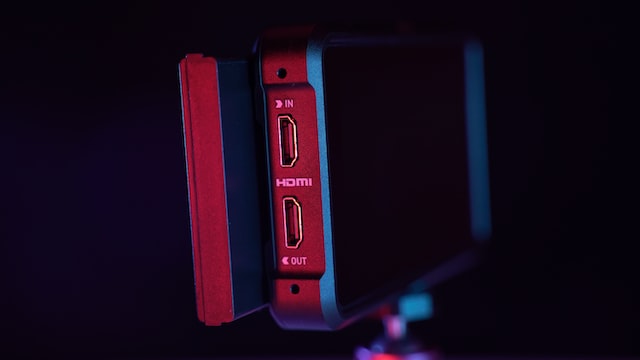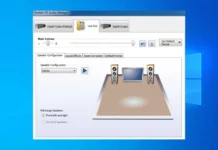Transmission of audio and video signals between devices in high quality requires the use of HDMI cables. They are susceptible to deterioration and damage from the environment over time. Recognizing these symptoms will help you get the best audio and video quality from your devices.
An HDMI cable is a must-have for any device that sends or receives high-definition video or audio. When it comes time to replace your HDMI cable, you may notice the following:
Constant Dropouts In The Signal
Inconsistent signal strength is a telltale sign that your HDMI cable needs to be replaced. A bad cable could cause a blank screen or an interruption in the sound. Depending on how severe the issue is, these signal drops could happen occasionally or quite often.
Low-Quality Images
A deteriorating HDMI cable could cause your video to be fuzzy, pixelated, or otherwise messed up. When an HDMI cable has been in use for a long time, it may lose some of its fidelity and result in a deterioration of the audio and video quality.
Signal Noise or Interference
Interference or noisy signals are other indications that your HDMI cable needs to be replaced. A faulty HDMI cable connection could be to blame for any interference with the picture or the sound. Over time, these disturbances can worsen, possibly resulting in a total loss of signal.
Cable Is Damaged
If the cables are damaged in any way (broken, frayed, or bent), the signal will not be transmitted as well. Your HDMI cable must be inspected regularly for damage and replaced if it shows any signs of deterioration to maintain optimal performance.
Previously Used Cables
It may be time to upgrade your HDMI cable if it’s older than five years. There is a greater risk of signal degradation with older cables that are subject to wear and tear.
Accessories for HDMI-Capable Devices
Improve your viewing and listening pleasure with the help of HDMI accessories, which facilitate device connection and use. The advantages of some of the most widely used HDMI connectors and adapters are discussed below:
AV Distribution Processors
Multiple HDMI devices can be connected to a single HDMI port via a switch. Sizes vary from two to eight input ports. This adapter is a must-have if your TV or monitor only has a few available HDMI ports.
HDMI Separators
Using an HDMI splitter, you can send a single HDMI signal to multiple monitors. An HDMI splitter lets you easily share what’s on your screen across multiple monitors.
Extension Cables for HDMI
Home theaters, conference rooms, and other large rooms can all benefit from the use of HDMI extenders because of the ease with which they transmit HDMI signals over long distances. You can get a range of 100 meters or more with these.
Auxiliary AV to HDMI Cables
HDMI adapters are compact gadgets that let you change the format of your HDMI signal. If your monitor only has a DisplayPort input, you can use your laptop or desktop computer by purchasing an HDMI to DisplayPort adapter.
Optical Fiber Cables
High-Definition Multimedia Interface (HDMI) cables are increasingly common because of their ability to transmit video and audio at a high resolution. They support multiple HDMI versions and lengths (from one to fifty feet) and resolutions (4K at 120Hz with HDMI 2.1). Based on your requirements and the compatibility of your devices, you should select the appropriate length and version of the HDMI cable.
Environmental Factors That Shorten The Life Of HDMI
For the highest possible quality when transferring audio and video between electronic devices, HDMI (High-Definition Multimedia Interface) cables are required. Their functionality and durability are vulnerable to environmental conditions. Some conditions are given below:
Temperature
The protective sheath around a cable can deteriorate in hot environments, leading to nicks, breaks, and other wear and tear. Conversely, the cable can become brittle and easily damaged when temperatures are very low. Having your HDMI cables in a cool, dry place will increase its duration.
Humidity
Your HDMI cable’s durability may also be impacted by the weather. The cable’s insulation can deteriorate due to high humidity, which in turn causes signal loss and poor video and audio quality. Water also poses a threat to the cable’s connectors, which can erode and become irreparably damaged if exposed to it. Keep your HDMI cables away from moisture to avoid these problems.
Twisting and Turning
The durability of your HDMI cable can also be impacted by regular use. If the cable is bent and twisted too often, the conductors may break, resulting in a loss of signal and poorer audio/video quality. When storing your HDMI cables, be sure to do so in a way that won’t bend or twist them too much.
Tension
Your HDMI cable is also susceptible to damage from tension. If you pull or yank on the cable, the connectors could get damaged, and the signal would be lost, resulting in poor audio and video quality. When connecting or disconnecting devices, be gentle with the HDMI cable and avoid pulling or bending it.
Conclusion
Avoid the unnecessary hassle by learning to spot the telltale symptoms that your HDMI cable needs to be replaced. It’s probably time to replace your cable if you’re having problems with audio and video quality, the signal drops out, or the cable itself is damaged. If you want your HDMI cable to last a long time and perform reliably, ensure you get a good one and treat it well.








